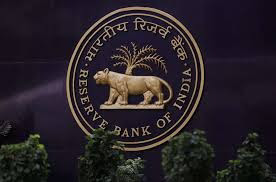Decoding the RBI's Monetary Policy: Objectives, Tools, and Impact
Introduction:
The Reserve Bank of India (RBI), as the country's central banking institution, plays a pivotal role in maintaining economic stability and facilitating growth. One of the key instruments at the RBI's disposal is its monetary policy. This policy exerts a significant influence on India's economy by regulating money supply, interest rates, and inflation. In this article, we delve into the intricacies of the RBI's monetary policy, exploring its objectives, tools, and impact on the economy.
Objectives of RBI's Monetary Policy:
The primary objectives of the RBI's monetary policy are to maintain price stability, foster economic growth, and ensure financial stability. Price stability involves controlling inflation within a reasonable range, typically targeted at around 4% in India. Stable prices provide a conducive environment for sustainable economic growth and safeguard the purchasing power of the currency.
Tools Employed by RBI:
The RBI employs a range of monetary policy tools to achieve its objectives:
Repo Rate and Reverse Repo Rate: The repo rate is the rate at which commercial banks borrow funds from the RBI, while the reverse repo rate is the rate at which they lend funds to the central bank. Altering these rates impacts the cost of borrowing for banks and influences their lending rates to customers.
Cash Reserve Ratio (CRR): Commercial banks are required to maintain a certain percentage of their total deposits as reserves with the RBI. Adjusting the CRR affects the amount of money banks can lend, impacting money supply in the economy.
Statutory Liquidity Ratio (SLR): Banks must also maintain a portion of their deposits in the form of liquid assets like government securities. Changes in the SLR influence the liquidity position of banks.
Open Market Operations (OMOs): Through OMOs, the RBI buys or sells government securities to regulate liquidity in the economy. Purchases infuse liquidity, while sales absorb liquidity.
Impact on the Economy:
Changes in the RBI's monetary policy have far-reaching consequences on the economy:
Interest Rates: Adjustments in the repo and reverse repo rates directly affect lending and borrowing rates in the economy. Lowering rates encourages borrowing, investment, and consumption, spurring economic activity. Conversely, raising rates can help curb inflation but might dampen growth.
Inflation: By controlling the money supply and borrowing costs, the RBI aims to manage inflation. Higher interest rates can rein in excessive demand and prevent price surges, while lower rates can stimulate spending.
Investment and Consumption: Lower interest rates can lead to increased borrowing for investments and purchases, boosting economic growth. Conversely, higher rates might encourage saving over spending.
Exchange Rates: Changes in interest rates can impact the exchange rate of the Indian rupee against other currencies, influencing international trade and capital flows.
Financial Markets: Monetary policy decisions can impact stock, bond, and currency markets, affecting investor sentiment and portfolio allocations.
Conclusion:
The RBI's monetary policy is a dynamic and complex tool that shapes India's economic landscape. By carefully calibrating interest rates, liquidity, and borrowing costs, the central bank aims to maintain a delicate balance between inflation control and economic growth. A well-executed monetary policy contributes to a stable, resilient, and prosperous economy, thereby improving the lives of millions of citizens.





Post a Comment